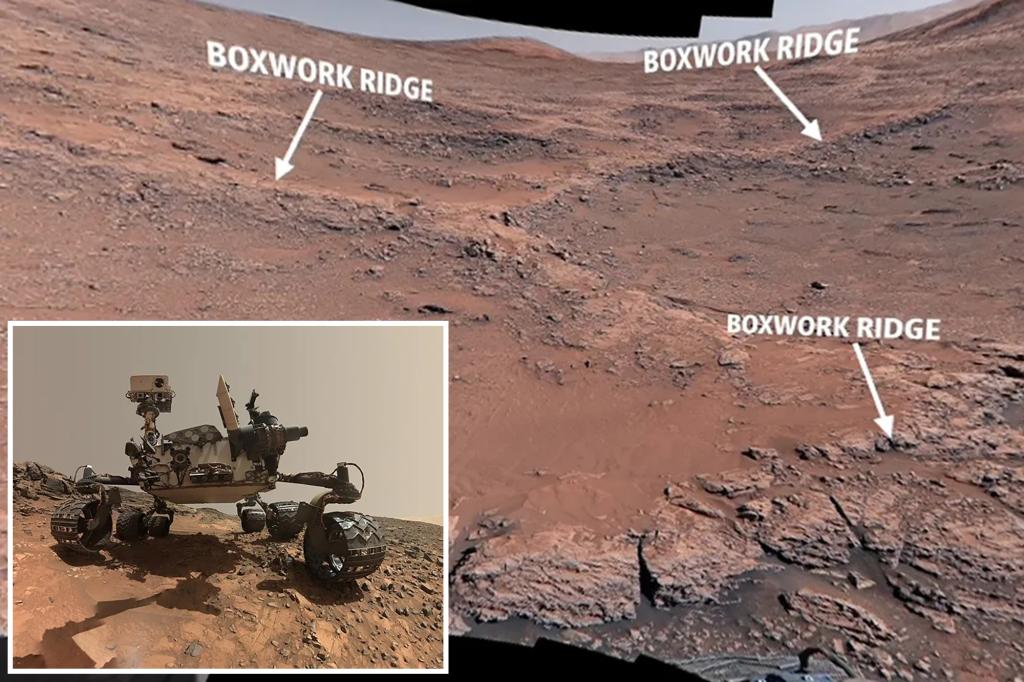It’s rocking into spiderwebs.
NASA’s Curiosity rover snapped pictures of a long-sought geological structure — dubbed “spiderwebs” — on the Red Planet that indicate a history of flowing water, the space agency announced.
The boxwork ridge structure spans 12 miles across at some points and indicates to experts that groundwater once spread across this section of the Red Planet that had previously only been observed from orbit.
“The images and data being collected are already raising new questions about how the Martian surface was changing billions of years ago,” NASA said in a statement Monday.
An image of Mars points out the up-close, mineral-rich surface ridges, which experts believe were made by flowing water. Nasa
“The Red Planet once had rivers, lakes, and possibly an ocean. Although scientists aren’t sure why, its water eventually dried up and the planet transformed into the chilly desert it is today,” NASA said.
Flowing groundwater created the crisscrossing ridges — some just a few inches tall — by leaving behind a trail of minerals that accumulated in cracks and fissures and then hardened as it dried.
“Remarkably, the boxwork patterns show that even in the midst of this drying, water was still present underground, creating changes seen today,” NASA said in its release.
“Eons of sandblasting by Martian wind wore away the rock but not the minerals, revealing networks of resistant ridges within,” it added.
The Curiosity rover has been collecting data on Mars since it touched down in 2012. Nasa
The formation occurs via a similar mechanism to stalagmites and stalactites here on Earth, experts said.
The “spiderwebs” got their name when researchers observed the arachnid-esque pattern of ridges from orbit.
The pattern stretches across miles of a layer of Mount Sharp, a three-mile-tall mountain, which is also being studied by researchers on the Curiosity rover team at NASA.
NASA’s statement noted that “The images and data being collected are already raising new questions about how the Martian surface.” Nasa
Curiosity used a robotic arm to dig into the bedrock of the area to gather samples for tests that seek to find any organic molecules in the ancient dirt.
Earlier this year, researchers discovered evidence that the barren desert planet could have once supported advanced life — finding the carbonate mineral siderite in 5% to 10% of samples collected back in April.
